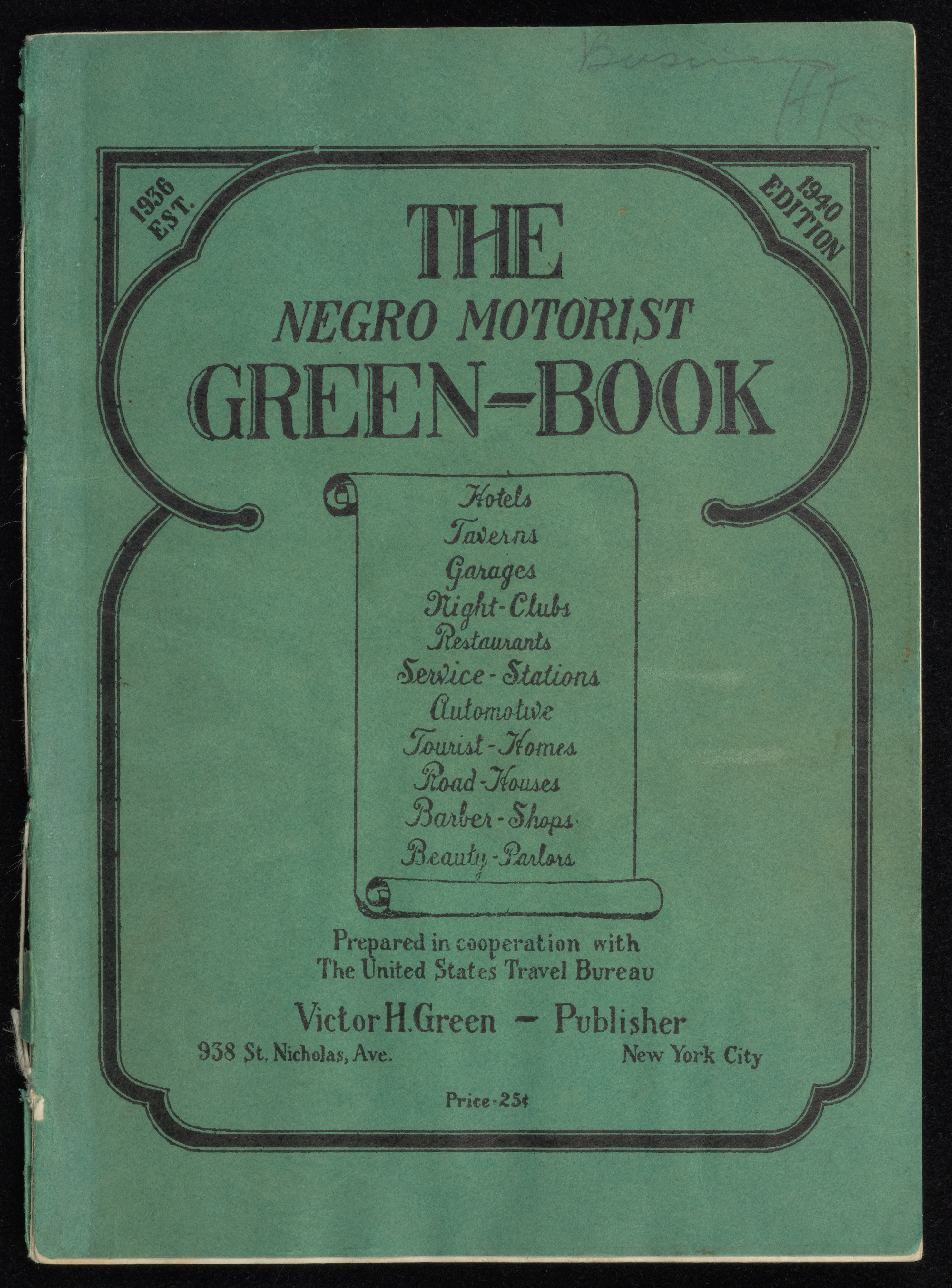Green Book Cover 1959
Courtesy Schomburg Center for Research in Black Culture, Jean Blackwell Hutson Research and Reference Division, New York Public Library.

Green Book Cover 1940
Courtesy Schomburg Center for Research in Black Culture, Jean Blackwell Hutson Research and Reference Division, New York Public Library.
“The Negro Motorist Green Book,” an exhibition developed by the Smithsonian Institution Traveling Exhibition Service (SITES) in collaboration with award-winning author, photographer and cultural documentarian, Candacy Taylor, will begin its three-year national tour June 13, 2020, at the National Civil Rights Museum in Memphis, Tenn. It will be on view at the Smithsonian Affiliate through Sept. 13, 2020.
The exhibition will highlight the history of “The Green Book,” an annual guide created in 1936 by Harlem postman Victor Green that helped African Americans travel the country with dignity by listing facilities that accepted blacks during the era of Jim Crow laws and segregation. “The Negro Motorist Green Book” is made possible through the generous support of Exxon Mobil Corporation.
“Bringing ‘The Negro Motorist Green Book’ to the National Civil Rights Museum at the Lorraine Motel is a natural fit as the historic motel is not only a business listed in ‘The Green Book,’ but also a memorial location that honors the legacy of civil rights leader Martin Luther King Jr.,” said Myriam Springuel, director of SITES and Smithsonian Affiliations. “The exhibition celebrates Victor Green and his publication and highlights the success of many African American-owned businesses, like the Lorraine Motel, that made these journeys possible.”
“The Negro Motorist Green Book” will offer an immersive look at the reality of travel for African Americans in mid-century America and how the annual guide served as an indispensable resource for the nation’s rising African American middle class. The exhibition will include artifacts from business signs and match books to historic footage and images, artwork and firsthand accounts to convey not only the apprehension felt by African American travelers, but also the resilience, innovation and elegance of people choosing to live a full American existence. It will bring focus to a vibrant parallel world of African American businesses, the rise of the black leisure class in the United States and the important role “The Green Book” played in facilitating the second wave of the Great Migration.
“The Green Book” was published in 1936 and distributed nationwide until 1967, providing African American travelers with information on restaurants, gas stations, department stores and other businesses that welcomed black travelers. In an era of Jim Crow laws and “sundown towns”—communities that explicitly prohibited African Americans from staying overnight—“The Green Book” offered critical, life-saving information and sanctuary.
SITES has been sharing the wealth of Smithsonian collections and research programs with millions of people outside Washington, D.C., for more than 65 years. SITES connects Americans to their shared cultural heritage through a wide range of exhibitions about art, science and history, which are shown wherever people live, work and play. For more information, visit sites.si.edu.
ExxonMobil, the largest publicly traded international oil and gas company, uses technology and innovation to help meet the world’s growing energy needs. ExxonMobil holds an industry-leading inventory of resources, is one of the largest refiners and marketers of petroleum products and its chemical company is one of the largest in the world. For more information, visit exxonmobil.com.
The National Civil Rights Museum, a Smithsonian Affiliate, located at the historic Lorraine Motel where civil rights leader Martin Luther King Jr. was assassinated, gives a comprehensive overview of the American Civil Rights Movement from slavery to the present. For more information, visit www.civilrightsmuseum.org.
# # #
SI-425A-2019